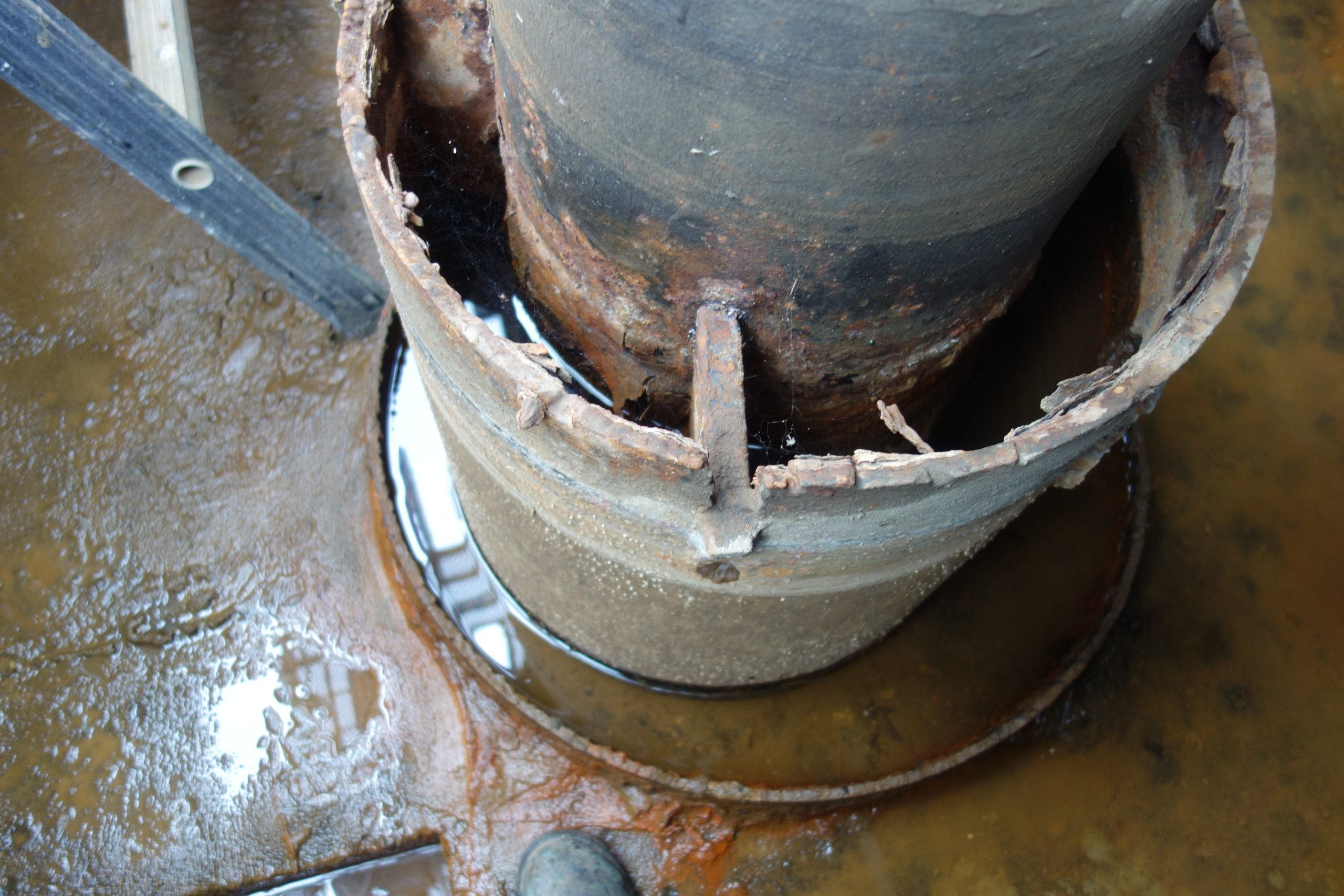Saturday 1 July 2023 - Publications


Cyriane Fournier, Corrosion and water quality engineer & Innovation Manager, Geostock
As part of the maintenance plan of its Loenhout underground gas storage facilities, FLUXYS carries out regular inspections to monitor the corrosion evolution of the soil/air well interface in the cellar outputs and trigger repairs when necessary. This contributes to ensuring the integrity of the wells and more broadly of the storage facility.

The Loenhout underground natural gas storage facility is located in Wuustwezel, in the Campine region, about 25 km north Antwerp (Belgium). It was developed in an aquifer system and is in operation since 1985.
Since 2012 and based on the results of an extensive Well Integrity Management study, FLUXYS has built a Long-Term Plan to suitably anticipate and manage the integrity of its underground facilities.
As part of this maintenance program, FLUXYS conducted in 2014 a comprehensive inspection campaign on the 36 wells ranked with the highest criticality for the storage, with a specific focus on the cellar well outputs, known to be sensitive zones because of the presence of stagnant water, oxygen gradient and restricted access.

In these cellars, the soil/air interface of the storage wells is a sensitive area in terms of corrosion. As a matter of fact, it can be subject to atmospheric corrosion, water corrosion or soil corrosion. This corrosion will depend on the humidity for atmospheric corrosion, the oxygen content and the salinity for water corrosion and the type of soil and oxygen content for soil corrosion. The integrity of the surface casing in this area is essential to maintain the tightness of the storage (even if this casing is a second barrier and is not in direct contact with the stored fluid).
FOCUS Fluxys / Loenhout underground natural gas storage

Most of the well outputs were found in good state and simply needed a repainting. Nevertheless, despite the cathodic protection and painting that were applied on all the wells, more significant corrosions were observed on some well interfaces. These corrosions were for example due to a painting system that was not adapted to immersed areas. Some others were due to guide tubes that were acting as screens to external cathodic protection, which prevented the surface casing to be protected in this area. Moreover, the annular space between guide tube and surface casing was conducive to water retention, which accelerates corrosion in tidal area.

For those specific wells, a repair program was set up. First of all, it was necessary to check that the remaining thickness of the surface casing was still acceptable considering the maximum operating pressure. For that purpose, a part of the guide tube was cut to inspect the external surface of the surface casing that was degraded. It was cut until a depth at which degradations were not visible anymore. The casing was then sand blasted and inspected with ultrasonic probes to collect some thickness references and with a 3D scanning laser to get the whole external profile.

Figure 2: 3D representation of one face of surface casing
Calculations based on API5C3 and ASME B31G revealed that corroded casings could still be considered as tight barriers at the considered pressure.
It was then recommended to repair the casings with a specific painting system adapted to humid and immersed environments and to apply anticorrosion bands additionally. Moreover, the risk of corrosion due to water retention was eliminated by creating a conical solin around the surface casing. All the annular spaces were filled-in with expansive materials. Last, the metallic pieces between the guide tube and the surface casing which limit vibrations were replaced by insulated materials to avoid any screen effect of the cathodic protection.
Several trials were made to find the optimal solin for these well interfaces with concentric casings. Some of these solins were not resistant to the immersive conditions. In 2022, GEOSTOCK and FLUXYS were able to verify that the selected solin configuration was still effective 5 years after its creation.

Since 2015, GEOSTOCK has been performing visual inspections of FLUXYS cellar outputs on a yearly basis to monitor the corrosion evolution of the soil/air well interfaces, trigger repairs or adaptations when necessary, and finally guarantee the integrity of the wells and more broadly of the underground storage.